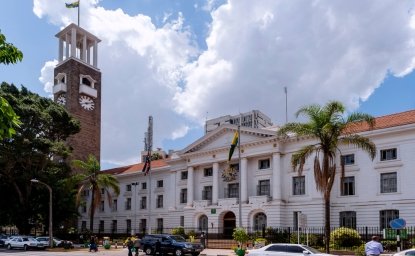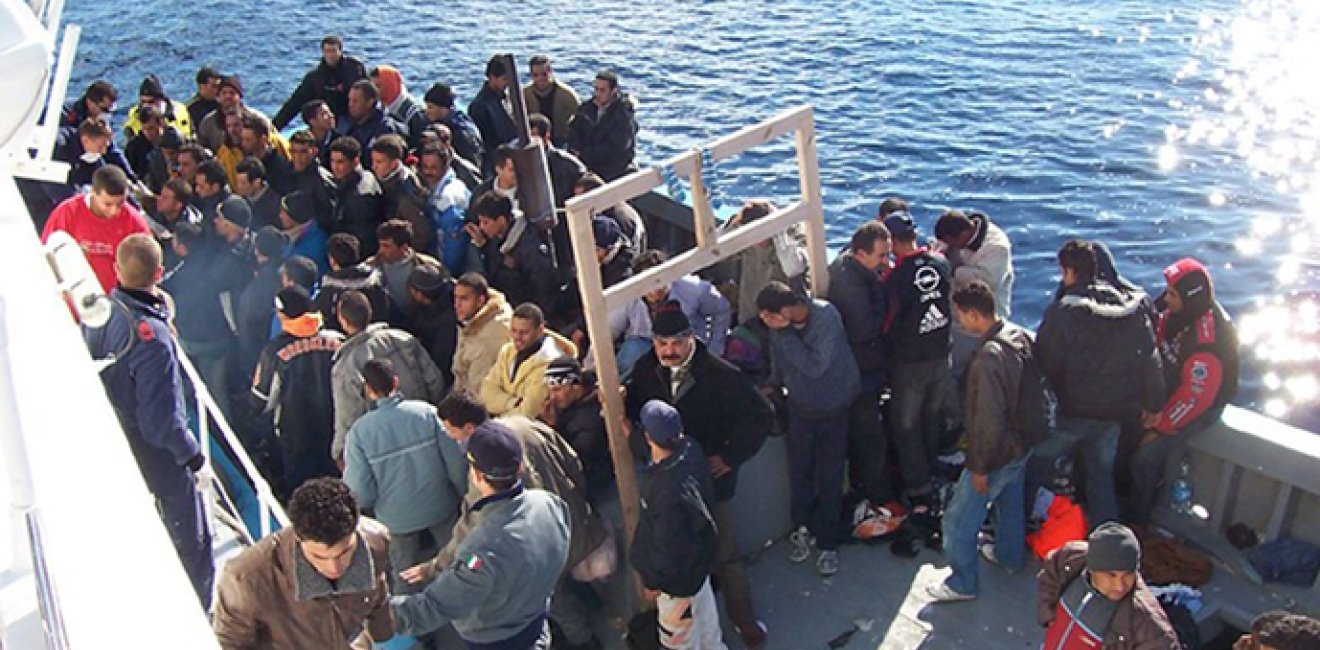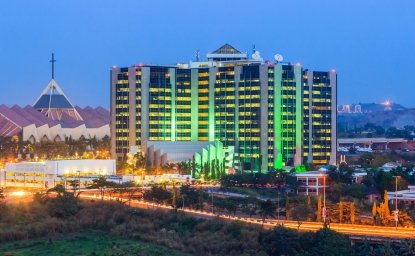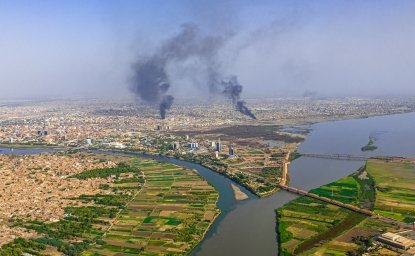
A blog of the Africa Program
In 2014, a significant number of refugees began pouring into the European Union (EU), fleeing from Africa and the Middle East to escape political conflict, war, famine, and lack of economic opportunity. Many of these refugees entered Italy and Greece by land and sea. Reaching its peak in 2015, the crisis generated over one million migrants in that year alone. Europe's handling of the crisis was aggravated by various misconceptions, misguided policies, and internal politics. Although the crisis has now abated somewhat, the next large-scale displacement of people is inevitable given global political, economic, and climate challenges. Yet lessons learned from the most recent European migration crisis could help to mitigate the next such crisis.
The migration from the Middle East and Africa to Europe followed three Mediterranean routes: western, central, and eastern. Of these, the central route, which departs out of Libya to reach Europe, includes migrants primarily from Sub-Saharan Africa. A series of agreements by the Economic Community of West African States (ECOWAS) allows for the free movement of people within West Africa until reaching Niger. From Niger northward, migrants rely on smugglers to reach Libya and eventually Europe. This makes Niger a critical transit country, along with Libya, in the central Mediterranean route. Despite the danger associated with the journey from Africa to Europe, such as the capsizing of boats and the prospect of drowning, over 90 percent of Africans who made the journey to Europe said they would do it again, regardless of the life-threatening consequences. In Nigeria, 45 percent of adults surveyed said they planned to move to another country in the next five years. In Tunisia, over 68 percent who plan to migrate claim Europe as their desired destination.
A majority of the African migrants fleeing to Europe travel to Niger, then Libya, and finally with the help of smugglers take the voyage to southern Italy, where they hope to be docked. Upon arrival in southern Italy, migrants are fingerprinted and processed. The EU's Dublin Regulation, which confines migrants to the European state of first arrival until the processing of asylum applications is complete, has put a heavy burden on southern European states such as Italy, Greece, Portugal, and Spain, which are often migrants' first stop due to their geographical location. The Dublin Regulation has generated tension between the EU's northern and southern states, with the latter, particularly Italy and Greece, bearing the brunt of the migration crisis. Within these countries, which have limited resources and receive little assistance from the EU despite the deluge of arriving migrants, populist movements with strong anti-migration stances have emerged. For instance, Matteo Salvini, leader of Italy's far-right party The Northern League, blocked boats containing migrants from docking in Italy during his term as Interior Minister in 2018-19.
Growing anti-migration sentiment within Europe has influenced reductions in funding for migrant search-and-rescue (SAR) missions. The Italian government's Mare Nostrum SAR mission in 2013-14 carried a monthly budget of USD$12 million and saved 150,000 migrants in one year. Nevertheless, Italy ended the operation in November 2014 due in part to its high cost. In its place, the EU introduced Triton, which operated with a lesser monthly budget of USD$3.6 million. With its smaller budget, the Triton operation was insufficiently capable of dealing with an increasing influx of migrants. The number of arrivals in the Triton period (63, 637), from November 2014 to May 2015, was significantly higher than that of the Mare Nostrum period (45,446), and mortality rates rose as well T(27.9 deaths/1000 arrivals under Trition compared to 20.9 deaths/1000 arrivals under Mare Nostrum).
At the cornerstone of Europe's migration crisis are the factors that cause migrants to flee their home countries in the first place. So long as there is conflict and strife rippling through parts of Africa and the Middle East, the treacherous journey to Europe will still be seen by migrants as a viable option. However, EU policy to address conflict in these regions has arguably taken a back seat to policies aimed at blocking migration into Europe. For instance, Law 2015/36, which the EU formulated in conjunction with the Nigerien government to criminalize smuggling, provides an immediate but temporary solution that does little to address longer-term problems of civil strife in Niger as well as neighboring Libya. These conflicts, left unresolved, will continue to drive the flow of migrants from both countries. Last December, the EU Emergency Trust Fund for Africa, aimed at curbing migration by addressing its root causes, released a new funding package nearing €150 million. Yet €101.7 million of the amount was dedicated to combating human smuggling in Morocco and discouraging migration rather than addressing the central issues driving migration from Sub-Saharan Africa. Also, the EU's investment in security forces at the border in Africa, although effective at the moment, is a short-term measure that is unlikely to have lasting effect without broader sustainable development across Sub-Saharan Africa.
As of 2018, the number of migrants crossing the Mediterranean into Europe has seen an 89 percent reduction from the height of the crisis in 2015. However, many of the critical issues that drove civilians to leave Africa in the first place persist. Africa's population boom is one such issue. In just one example, Niger's population is expected to double in size over the next 30 years as it has the highest fertility rate in the world of 7.3 children per woman. Another issue is climate change, which is a driver of food insecurity in Sub-Saharan Africa. Since 1960, Lake Chad has shrunk over 90 percent, posing a threat to the 25 million people who depend on the lake for their livelihoods. A third issue is the growing violent extremism in the Sahel region, which in 2019 alone displaced more than 1,500 civilians across five countries.
In sum, although the number of migrants entering Europe from Africa and the Middle East has diminished, the factors driving the flow are more acute than ever. In order to avoid a recurrence of the mass scale European migration crisis that peaked in 2015, a pro-active and comprehensive strategy that targets migration from the inside out is required.
Such a strategy would benefit from incorporating six lessons learned from the recent European migration crisis:
- Closing borders is a temporary solution to a long-term problem.
- Funding and programming targeting economic growth and development in the home countries of migrants would help foster a long-term sustainable solution.
- International intervention is needed to stabilize transit countries such as Libya and Niger.
- Revision of the Dublin Regulation to facilitate the even distribution of migrants throughout the EU would alleviate the burden on southern European states and could help curb anti-migrant sentiment in those countries.
- Shifting from efficient and comprehensive SAR missions such as Mare Nostrum to under-resourced operations such as Triton has an adverse effect on the number of arrivals and mortality rates.
- Increased access for migrants to legitimate pathways to enter Europe would help deter the use of more dangerous routes and reliance on smugglers.
Ms. Hana Alem holds an M.A. in Government and Politics from St. Johns University. She is a former Staff Intern with the Wilson Center Africa Program in Washington, D.C.
Author

Africa Program
The Africa Program works to address the most critical issues facing Africa and US-Africa relations, build mutually beneficial US-Africa relations, and enhance knowledge and understanding about Africa in the United States. The Program achieves its mission through in-depth research and analyses, public discussion, working groups, and briefings that bring together policymakers, practitioners, and subject matter experts to analyze and offer practical options for tackling key challenges in Africa and in US-Africa relations. Read more

Explore More in Africa Up Close
Browse Africa Up Close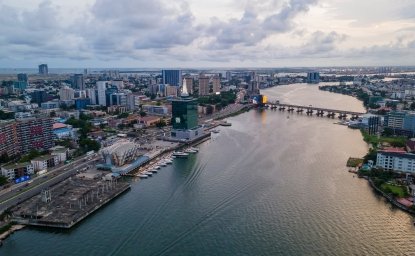
The Innovative Landscape of African Sovereign Wealth Funds
